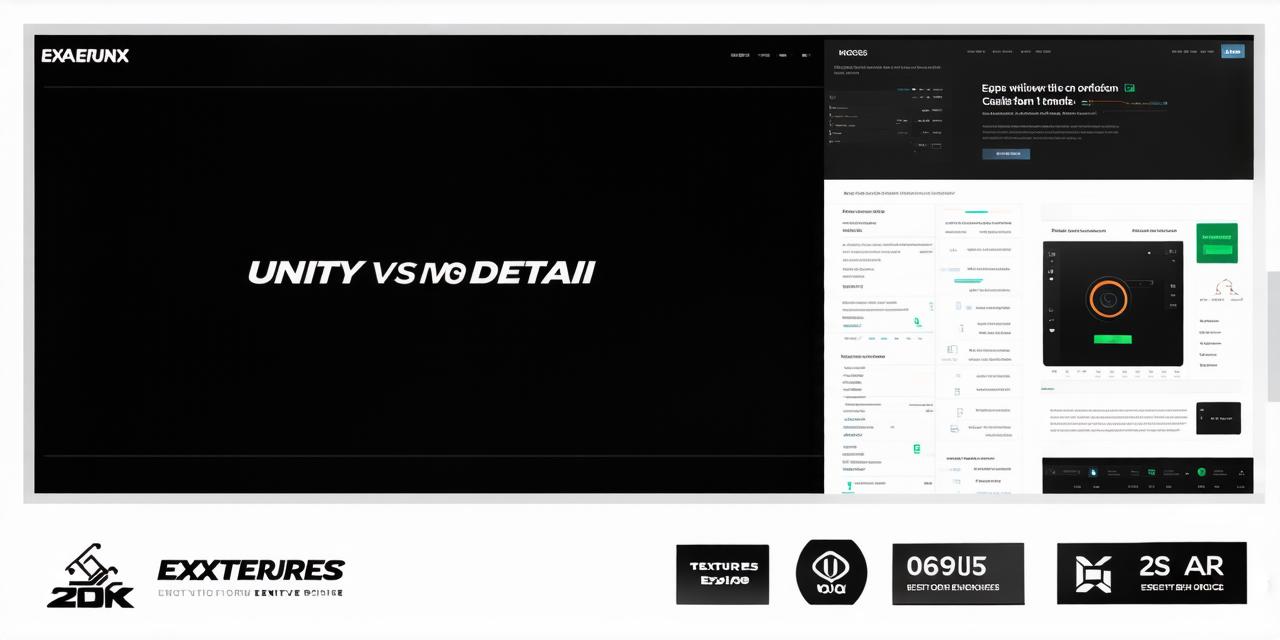Artificial Reality (AR) is becoming increasingly popular as a way to enhance user experiences in various industries, such as gaming, education, and healthcare.
Unity: A Versatile Engine for AR Development
Unity is a cross-platform game engine that also supports AR development. It was first released in 2005 and has since grown into a powerful tool for creating immersive experiences across various devices, including smartphones, tablets, and virtual reality headsets. Unity’s strengths include its ease of use, extensive community support, and compatibility with a wide range of platforms.
One of the key benefits of using Unity for AR development is its built-in support for mobile devices. This means you can easily create AR experiences that run on smartphones and tablets without having to learn a new engine or develop additional code. Additionally, Unity has a large and active community of developers who contribute to its open-source codebase, providing a wealth of resources and tools to help you get started with your project.
Another advantage of Unity is its ability to support both 2D and 3D graphics. This makes it a versatile tool for creating AR experiences that range from simple information overlays to complex, interactive 3D environments.
Unreal Engine: A Powerhouse for High-Performance AR Applications
Unreal Engine is another popular engine for AR development, first released in 1998 by Epic Games. It was originally designed for use in video games but has since been adapted for various industries, including AR. Unreal Engine is known for its high-performance graphics and support for advanced features such as ray tracing, motion capture, and real-time rendering.
One of the key advantages of using Unreal Engine for AR development is its ability to handle complex 3D environments with ease. This engine was originally designed for use in video games, which require high-performance graphics and smooth gameplay. As a result, it has built-in support for advanced features such as real-time lighting, reflections, and shadow mapping that are essential for creating realistic 3D environments.
Another advantage of Unreal Engine is its support for mobile devices. While Unity also supports mobile development, Unreal Engine has dedicated tools specifically designed for creating AR experiences on smartphones and tablets. This means you can easily create high-performance AR applications that run smoothly on a variety of devices.
Which Engine is Right for Your AR Project?
Ultimately, the choice between Unity and Unreal Engine will depend on your specific project requirements and development experience. Both engines are powerful tools with their own unique strengths and weaknesses.
If you are new to AR development or looking to create a simple 2D information overlay, Unity may be the best choice due to its ease of use and extensive community support. However, if you need high-performance graphics and advanced features such as ray tracing and motion capture, Unreal Engine may be the better option.
Additionally, if you are experienced in game development or looking to create a complex 3D environment, Unreal Engine’s advanced tools and dedicated mobile development resources may make it the more suitable choice for your project.
Conclusion
In conclusion, both Unity and Unreal Engine are powerful tools for AR development that can help you create immersive experiences across various devices. The choice between the two will depend on your specific project requirements and development experience. If you are new to AR development or looking to create a simple 2D information overlay, Unity may be the best choice. However, if you need high-performance graphics and advanced features, Unreal Engine may be the more suitable option.
